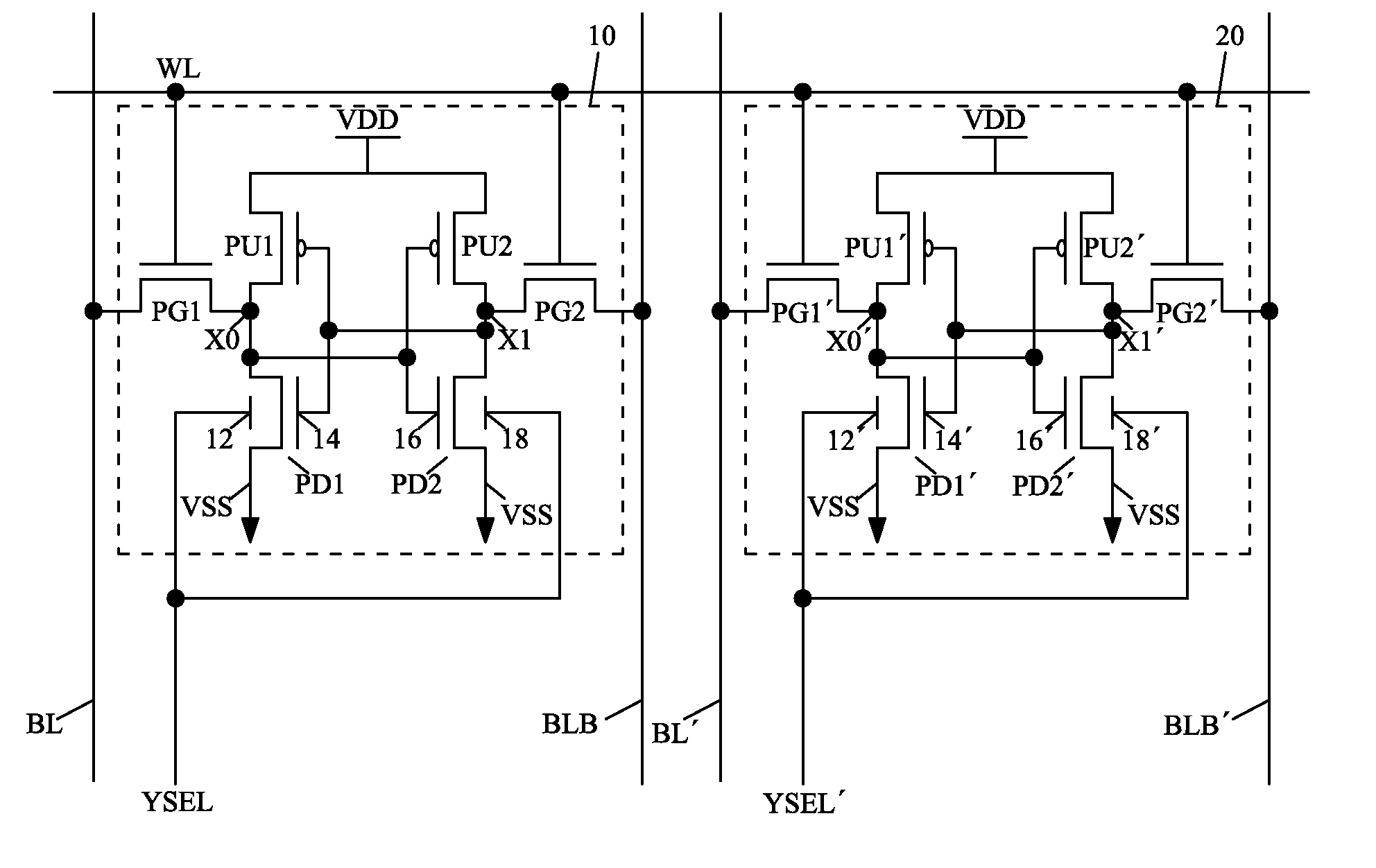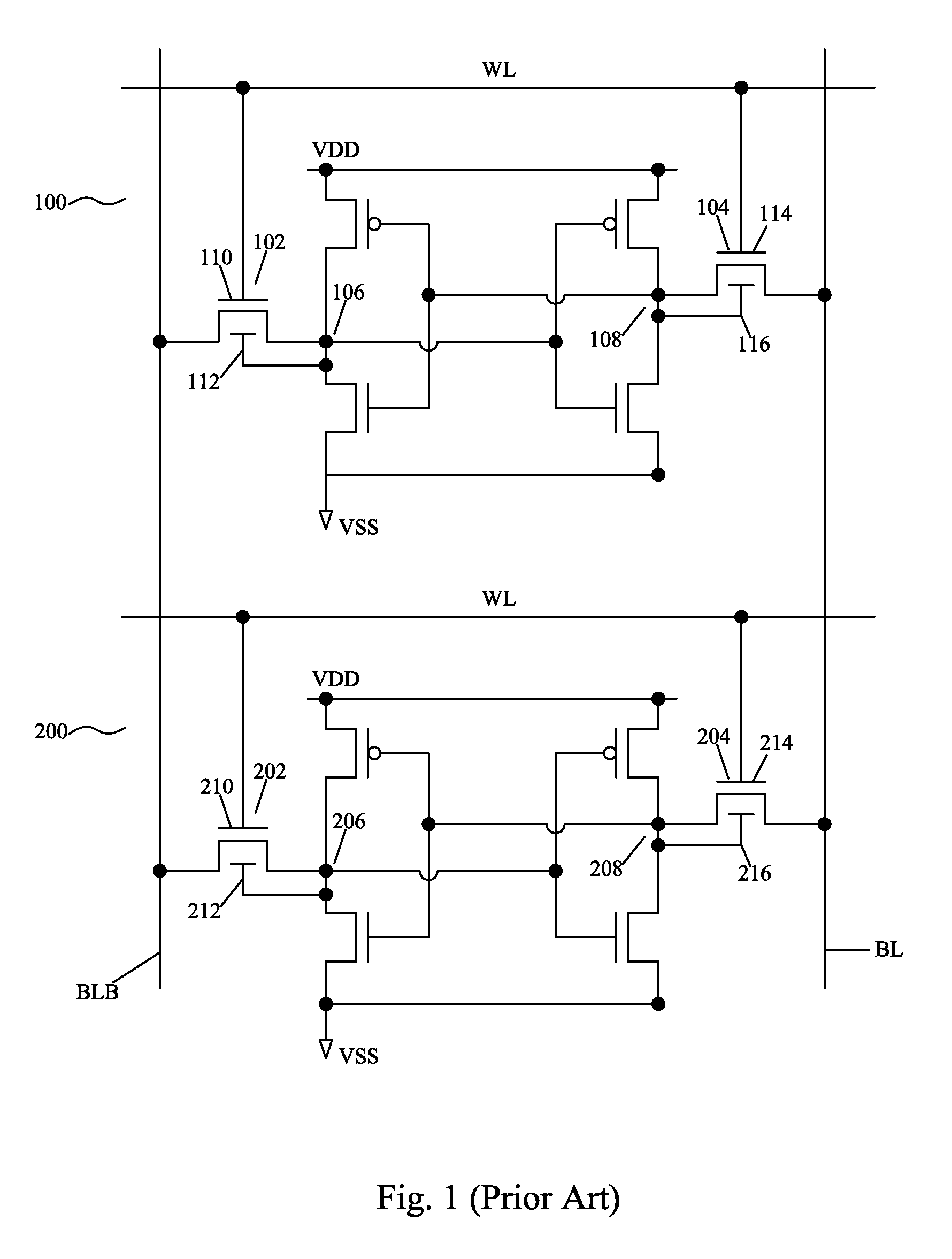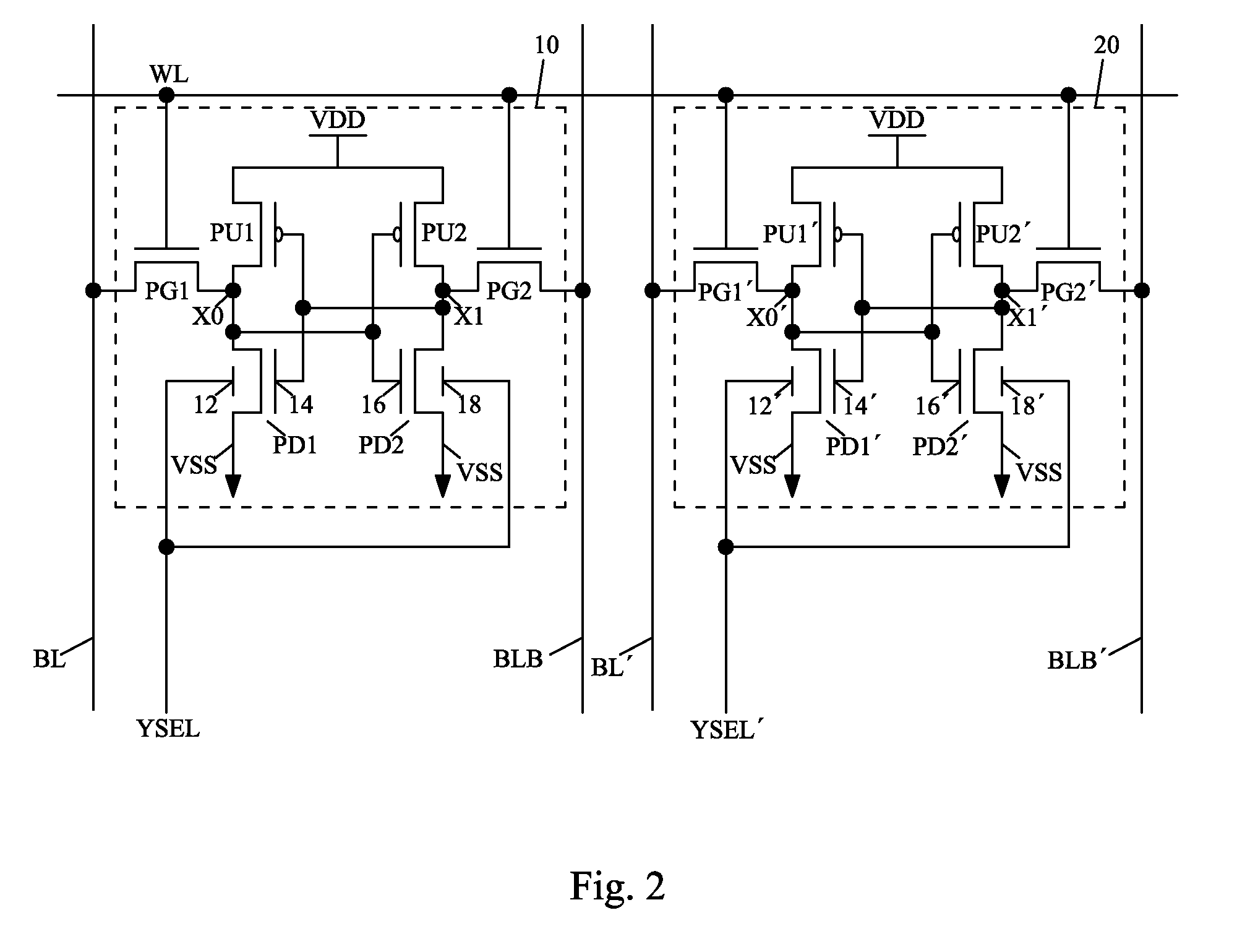Read/Write Margin Improvement in SRAM Design Using Dual-Gate Transistors
a dual-gate transistor and read/write margin technology, applied in the field of integrated circuits, can solve problems such as errors in respective read and write operations, erroneous flip of sram cells, and above-discussed structures, and achieve the effects of improving read disturbance immunity, improving write ability, and low leakage curren
- Summary
- Abstract
- Description
- Claims
- Application Information
AI Technical Summary
Benefits of technology
Problems solved by technology
Method used
Image
Examples
Embodiment Construction
[0016]The making and using of the embodiments of the present invention are discussed in detail below. It should be appreciated, however, that the embodiments of the present invention provide many applicable inventive concepts that can be embodied in a wide variety of specific contexts. The specific embodiments discussed are merely illustrative of specific ways to make and use the invention, and do not limit the scope of the invention.
[0017]A novel static random access memory (SRAM) cell embodiment is provided. The variations and operation of the embodiment are discussed. Throughout the various views and illustrative embodiments of the present invention, like reference numbers are used to designate like elements.
[0018]FIG. 2 illustrates an embodiment of the present invention, which includes six-transistor (6-T) SRAM cells 10 and 20. SRAM cell 10 includes pull-up transistors (PMOS transistors) PU1 and PU2, pull-down transistors (NMOS transistors) PD1 and PD2, and pass-gate transistor ...
PUM
 Login to View More
Login to View More Abstract
Description
Claims
Application Information
 Login to View More
Login to View More - R&D
- Intellectual Property
- Life Sciences
- Materials
- Tech Scout
- Unparalleled Data Quality
- Higher Quality Content
- 60% Fewer Hallucinations
Browse by: Latest US Patents, China's latest patents, Technical Efficacy Thesaurus, Application Domain, Technology Topic, Popular Technical Reports.
© 2025 PatSnap. All rights reserved.Legal|Privacy policy|Modern Slavery Act Transparency Statement|Sitemap|About US| Contact US: help@patsnap.com



